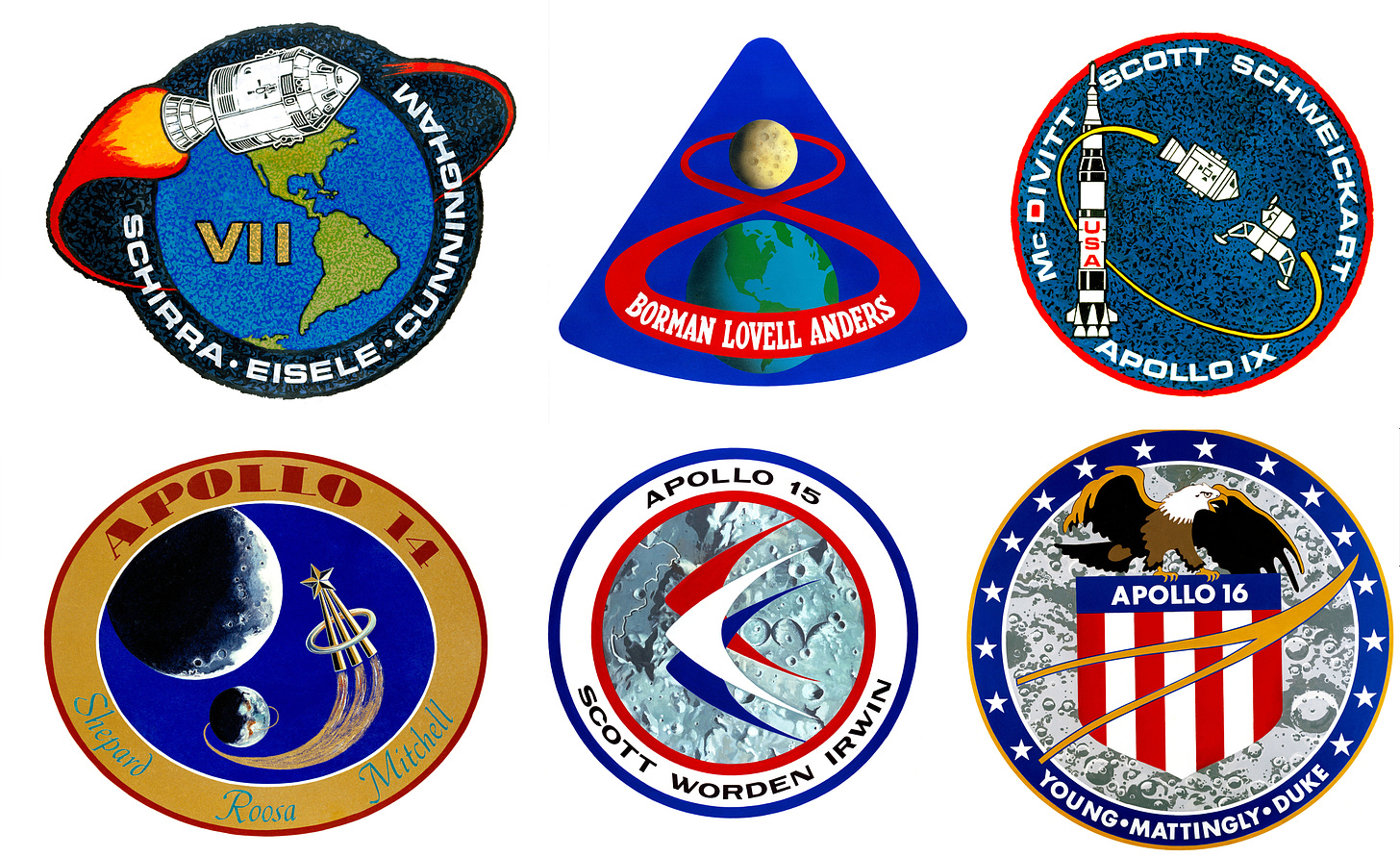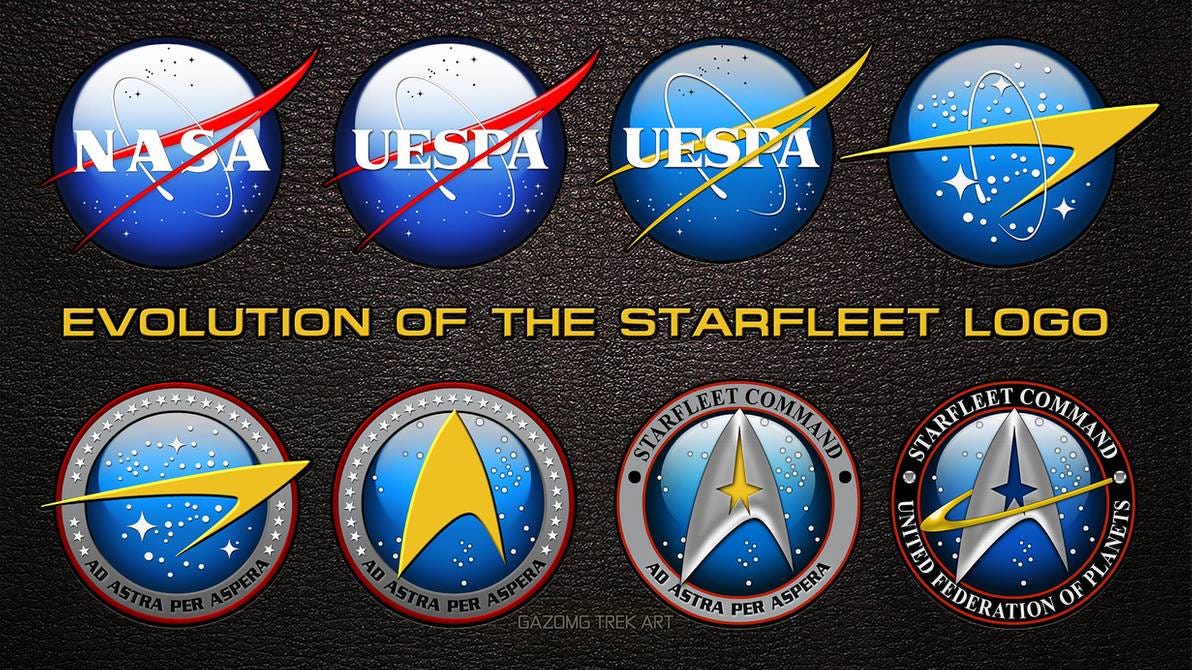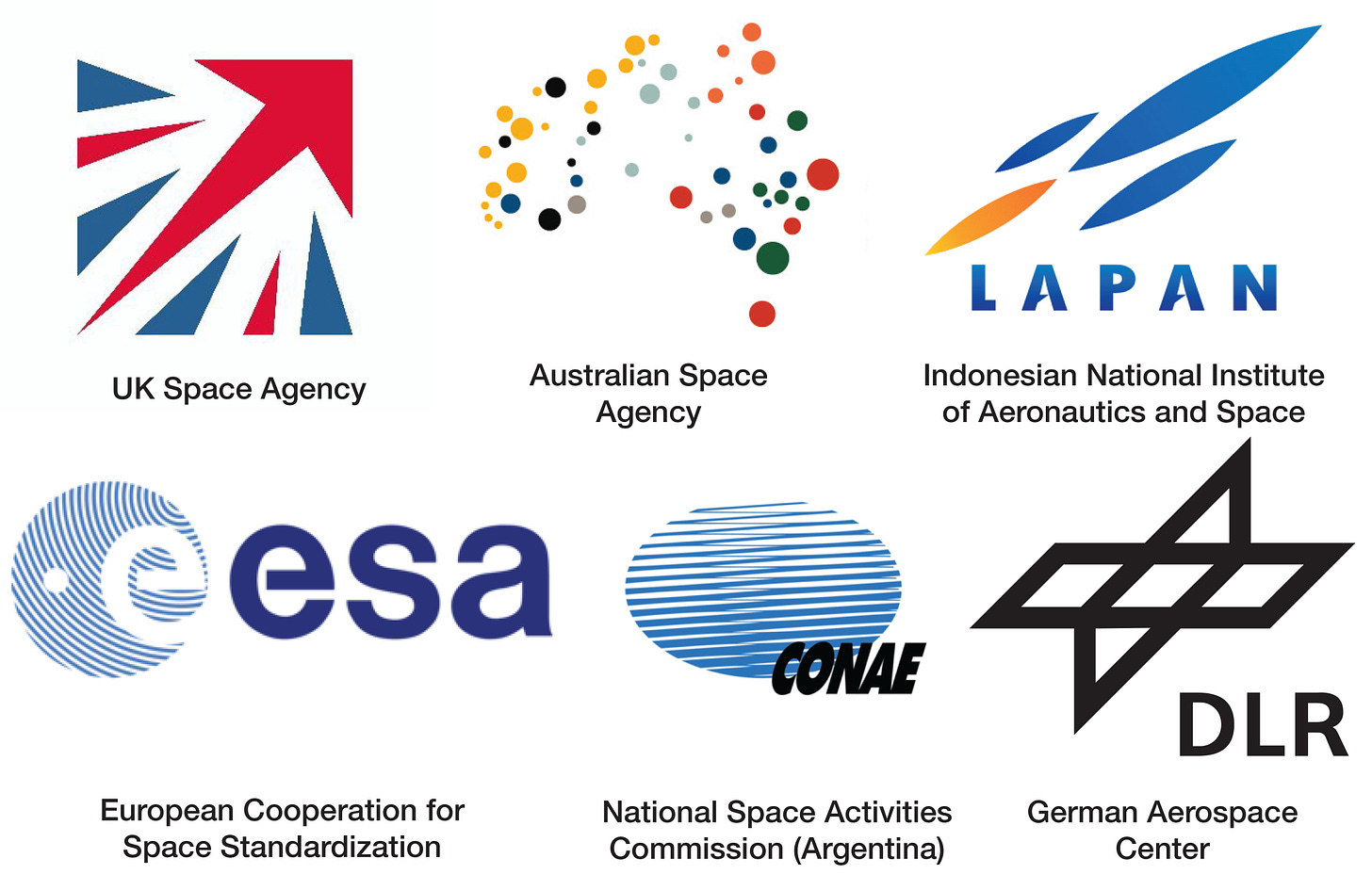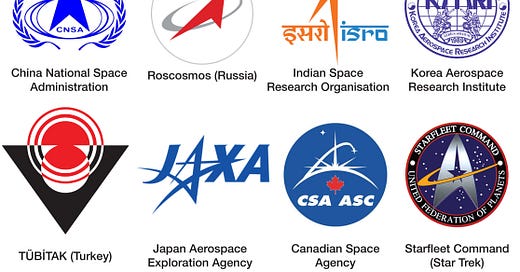It's not just Star Trek. The Space Force logo looks familiar because it's inspired by decades of aerospace graphic design.
President Trump unveiled the official U.S. Space Force seal Friday by tweet, and the initial reaction online was that it looked like a “Star Trek” ripoff.
Though I totally get why we’re quick to conclude our former reality show host president makes design decisions based on TV shows, the USSF seal isn’t simply a “Star Trek” wannabe, it pays homage to decades of aerospace graphic design. From its delta symbol to the blue star field and orbital, the seal uses design tropes that have been used for years in the U.S. and around the world to visually communicate space and flight.
“The U.S. Space Force seal honors the Department of the Air Force’s proud history and long-standing record of providing the best space capabilities in the world,” a USSF spokesperson told Yello in a statement. “The delta symbol, the central design element in the seal, was first used as early as 1942 by the U.S. Army Air Forces; and was used in early Air Force space organization emblems dating back to 1961. Since then, the delta symbol has been a prominent feature in military space community emblems.”
The delta, a triangle shape named after the Greek letter delta (Δ) looks like it’s blasting off and has long been associated with flight. In 1928, a crop dusting company founded in Macon, Ga., called Huff Daland Dusters was renamed Delta Air Service, after the Mississippi Delta region. The company has used various delta logos over the years:

Many of the other visual tropes associated with space design can be traced to NASA, which introduced a seal and insignia in 1959 that were both set on a blue field with stars and used a circular orbit to represent space travel. The red wing mark represents aeronautics, according to NASA.
Read more: [How design fueled our NASA nostalgia]
Orbital design and deltas show up in NASA mission patches too, like these patches from the Apollo program:

Credit: NASA
“Star Trek” debuted in 1966 and featured fictional logos reminiscent of NASA’s. Here’s one fan-made graphic imagining how NASA’s “meatball” logo evolved into the logo for series’ Starfleet Command:

Credit: via Deviant Art
Deltas and triangle shapes are used in logos for public-sector space agencies around the world, including the China National Space Administration, the Korea Aerospace Research Institute, Turkey’s TÜBÏTAK, the Japan Aerospace Exploration Agency, and the Canadian Space Agency. Russia’s Roscosmos logo looks like a minimalist take on the NASA one, while the Indian Space Research Organisation turned their icon into a satellite.

Logos for Russia’s Roscosmos (left) and the Indian Space Research Organisation (right)
While NASA design has left its mark, there are some space agencies that break the mold, like the UK Space Agency and Indonesia’s LAPAN, which each went with rocket-style logos. The Australian Space Agency logo looks like a view of Australia from space and was made using eight Aboriginal constellations and star maps. The European Cooperation for Space Standardization and Argentina’s CONAE use blue-line ellipses, while the German Aerospace Center has an abstract satellite logo.

The U.S. Air Force Space Command was established in 1982, and it used a seal that blended NASA-inspired elements with military-style design, placing a delta in the middle of a crest. The delta showed up in Space Command badges and the logo for their “Generation Space” podcast. The Space Command was redesigned as the USSF as part of the 2020 National Defense Authorization act Trump signed.
Despite Defense Department guidelines prohibiting unauthorized use of military service marks, the Trump campaign continues to fundraise off the Space Force by selling Trump-branded Space Force merchandise in its online store.
Read more: [The U.S. Space Force is now official, and the Trump campaign hasn’t stopped fundraising off it]
Trump’s Twitter seal reveal appeared to catch the Pentagon off guard, according to Washingtonian. Minutes before Trump’s tweet, a Washingtonian staff writer was on the phone with a USSF spokesman who said he was looking at mockups for possible seals that were “all being kicked around right now.”
“We don’t want to get too ahead—there’s nothing official,” the spokesman said. “There’s a lot of stuff that’s still in progress.”
The spokesman told Washingtonian they were in design and conceptual stages and to check back in April after the 36th annual Space Symposium. Trump’s tweet came five minutes later.
We don’t know who designed the USSF seal. Austin-based ad agency GSD&M — which designed branding for the Air Force and was mentioned as a possible contender to design Space Force branding, per emails obtained by Yello through a Freedom of Information Act request last year — said it did not design the seal Trump tweeted.
Maj. Will Russell, a U.S. Space Force spokesperson, told Yello, “the President selected the United States Space Force seal from a number of seal options provided by the Department of the Air Force.”




